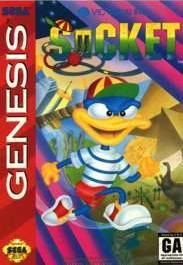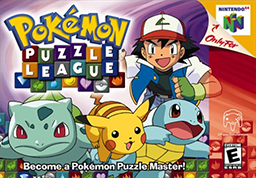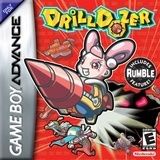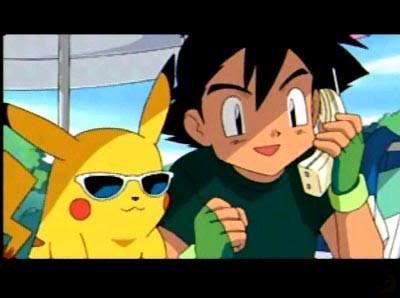A pretty motley crew in today's installment. We've got a couple obscure titles, a spinoff, and a port/remake up for evaluation, plus a company famous for doing only one thing finally deciding to make a game that did something else.
 60: Socket
60: SocketGenre: Platformer
System: Sega Genesis
Developer: Vic Tokai
Publisher: Vic Tokai
Released: August 17, 1993
In this Sega Genesis platformer, you play as a blue cartoon animal who runs quickly. You adventure through several worlds smashing up robots in pursuit of a mad doctor who fights you with goofy inventions at the end of every level. To stay alive you collect shiny yellow objects, and there's a great soundtrack.
Sound familiar?
Of the few who are aware of Socket's existence, most write it off as a Sonic clone in the vein of Bubsy, Awesome Possum, and other 90s platforming me-too mascots. While Socket was certainly inspired by everyone's favorite hedgehog, I've found a certain charm and uniqueness to this game that makes me place it fairly high on the countdown.
The graphics and soundtrack, especially, combine to make Socket a one-of-a-kind experience, at least for me. It's a dreamlike, trippy world, scored by instruments I hear rarely or never in other games. One example is the main instrument in this track, which is heard throughout the game - but I've never heard anything like it in any other Genesis title.
As the robot duck Socket, your goal is to stop Time Dominator, a sort of winged gargoyle-like fellow wearing a monocle and top hat. Time Dominator is, as you may have guessed from his name, trying to rewrite history to make himself supreme ruler of whatever bizarre alternate world this game takes place in. Fortunately, Socket can time travel as well. There are stages based on the age of the dinosaurs, the Middle Ages, Antiquity, the future, and some that are harder to slot into a place in time like the oil-and-lava-filled Olein Cavern.
Socket's robot construction means he needs a constant supply of energy. His HP slowly drops over time (and of course if he gets hit), but can be restored by grabbing lightning bolts found throughout each level. The end-of-level goal is a charging station he can plug his tail into to restore his health for the next world. Why are there robot charging stations in the age of dinosaurs? Well I was going to make a joke about that but I realized all of the enemies in this game are also robots and were presumably placed there by Time Dominator, so maybe his own robots use the charging stations as well. Huh. Well, that clears that issue up.
Not gonna lie - a large part of my enjoyment of Socket stems from it being a beloved childhood game. Socket was among my first Genesis games, and was probably somewhere around the eighth or ninth video game I ever played, so it means a lot to me. But then, that's part of why my list is my own - I've covered plenty of obscure titles here, and plan to cover several more before we're through.
Like number 59, for instance.
Genre: 3D Platformer
System: Nintendo 64
Developer: DMA Design
Publisher: Take-Two Interactive
Released: October 1, 1998
From the makers of Grand Theft Auto comes this little-known N64 cartridge of insanity. Loaded with quirky humor, SSSV stars the bumbling moron Dan Danger and his sidekick EVO the robot as they are sent to investigate a space station that reappeared after vanishing for a thousand years. The station was meant as a sort of space amusement park and zoo, but in the long absence of the station the human crew has been killed and the animals aboard the ship have merged with the technology and taken control. Upon crash-landing their rocket into the station, EVO's robot body is destroyed, leaving only his computer chip. Fortunately, EVO has the ability to hijack the cyborg animals and control them. As EVO, you play through four multi-level worlds accomplishing the goals Dan Danger outlines in an effort to get your body back and save Earth from the space station, which is on a crash course with the planet.
SSSV is a very unique game based around using different playable characters to solve puzzles, accomplish goals, and reach the exit. Goals vary from "kill all the X in this level" to "activate this machine" or "collect the X" and occasionally something more unique. There are also 15 Power Cells to collect in every level - the more you collect, the more powerful EVO's robot body will be in the final stage. There's also a trophy to find in each level that is found by performing an extra mission not mentioned in the level description. Sadly, one of the trophies is bugged and has no collision detection, meaning it's impossible to get 100% completion (although you can still play the minigame this would have unlocked by entering a secret code).
SSSV has elevator music playing in most of the levels, deranged animal designs and abilities, and some toilet humor thrown in for good measure. Said elevator music is provided by destructible speakers scattered throughout each level, and not only can the speakers be destroyed (which makes the music quieter) one level asks you to mute the music by destroying every speaker in the stage. This game does not take itself seriously at all, and it's great fun. I just wish it had been bug-tested a little better and that the many animals that were cut from the game were put back in (There's a LOT of beta material floating around on the net for such an obscure game, and there's a few animals that appear that you can't control, like the Rocket Fox and the Frog).
 58: Sonic Adventure DX
58: Sonic Adventure DXGenre: 3D Platformer
System: GameCube
Developer: Sonic Team
Publisher: Sega
Released: June 18, 2003
This was the last Sonic game I truly enjoyed (haven't played Generations yet). Despite the bugs and other problems, I played the absolute crap out of Sonic Adventure and even managed to get all the emblems (something I never pulled off with Sonic Adventure 2).
Sonic Adventure took the Sonic series in a different direction, placing the action on a more Earthlike world with normal humans besides Robotnik (who got a name change to Eggman - in the US, at least. He was always Eggman in Japan). Every old character got a redesign (with the exception of Amy, I prefer the older looks) and plot became much more important.
Adventure 1 is not a masterpiece and it hasn't aged very well, but I had fun with it for a long time.
 57: Pokemon Puzzle League
57: Pokemon Puzzle LeagueGenre: Puzzle
System: Nintendo 64
Developer: Intelligent Systems
Publisher: Nintendo
Released: September 25, 2000
Nintendo certainly does think Americans would be allergic to Lip and her friends. The true mascot of the Panel de Pon series has been consistently shoved to the side over the years, first with Yoshi in Tetris Attack and then by Pokemon in this game. Nowadays the Puzzle League series has become sterile and empty, lacking any mascots at all. A darn shame.
This is one of the best-designed puzzle games I've played. Using a cursor, you move around a playing field swapping blocks to make three or more match while more slowly rise from the bottom. It's addictive and fun, and PPL introduces a ton of new game types, including a 3D mode that makes the playing field cylinder shaped and a mode that tasks you to clear the board with just a few moves, and even lets you make your own such puzzles. And the whole thing is covered in Gen 1 Pokemon Anime and tons of voice acting, which you may like or be annoyed by. If nothing else, the legendary Gary Oak makes a prominent appearance here in all his douchey glory.
Speaking of puzzle games, I'm looking over my list in Microsoft Word and it appears I've neglected to include Dr. Robotnik's Mean Bean Machine. Funnily enough, that game is similar to this one in that it was an Americanized version of a cute Japanese puzzle game. However, unlike Intelligent Systems who chickened out and gave up on mascots, Compile eventually brought the real cast of Puyo Puyo to other countries with games like the GameCube Puyo Pop Fever. I liked both Bean Machine and Fever, so they get a shout out here.
 56: Drill Dozer
56: Drill DozerGenre: Platformer
System: Game Boy Advance
Developer: Game Freak
Publisher: Nintendo
Released: February 6, 2006
An extremely late arrival to the Game Boy Advance scene, Drill Dozer is the first and only game Game Freak has made since they struck gold with Pokemon (with the early exception of 1999 PS1 game Click Medic). In Drill Dozer you play as Jill, a young and excitable girl who pilots the tiny mecha Drill Dozer. Jill, a member of the honorable thieving gang The Red Dozers, does battle with the rival gang The Skullkers over a stolen diamond that means more than just monetary worth to Jill and her father...
The best giveaway that this game was made by Game Freak is the music, which uses the exact same very recognizable soundfont as Pokemon Ruby and Sapphire, horns and all. The action is tight and unique, centering around using the L and R buttons to spin the drill to solve puzzles and clear the path. You can also spin it clockwise and counterclockwise, which actually becomes important with certain obstacles and boss fights. The main game is very short, although there are some ludicrously difficult bonus stages to unlock. The game also comes with a rumble feature that makes the cartridge funny-shaped.
As Drill Dozer sold poorly, I think it's safe to say Game Freak is never going to leave the safe, moneymaking embrace of Pikachu ever again.


For some reason, my copy of Drill Dozer deleted its own data so I never finished that game :/ I think it was that rumble pak shaking up the game's insides
ReplyDelete